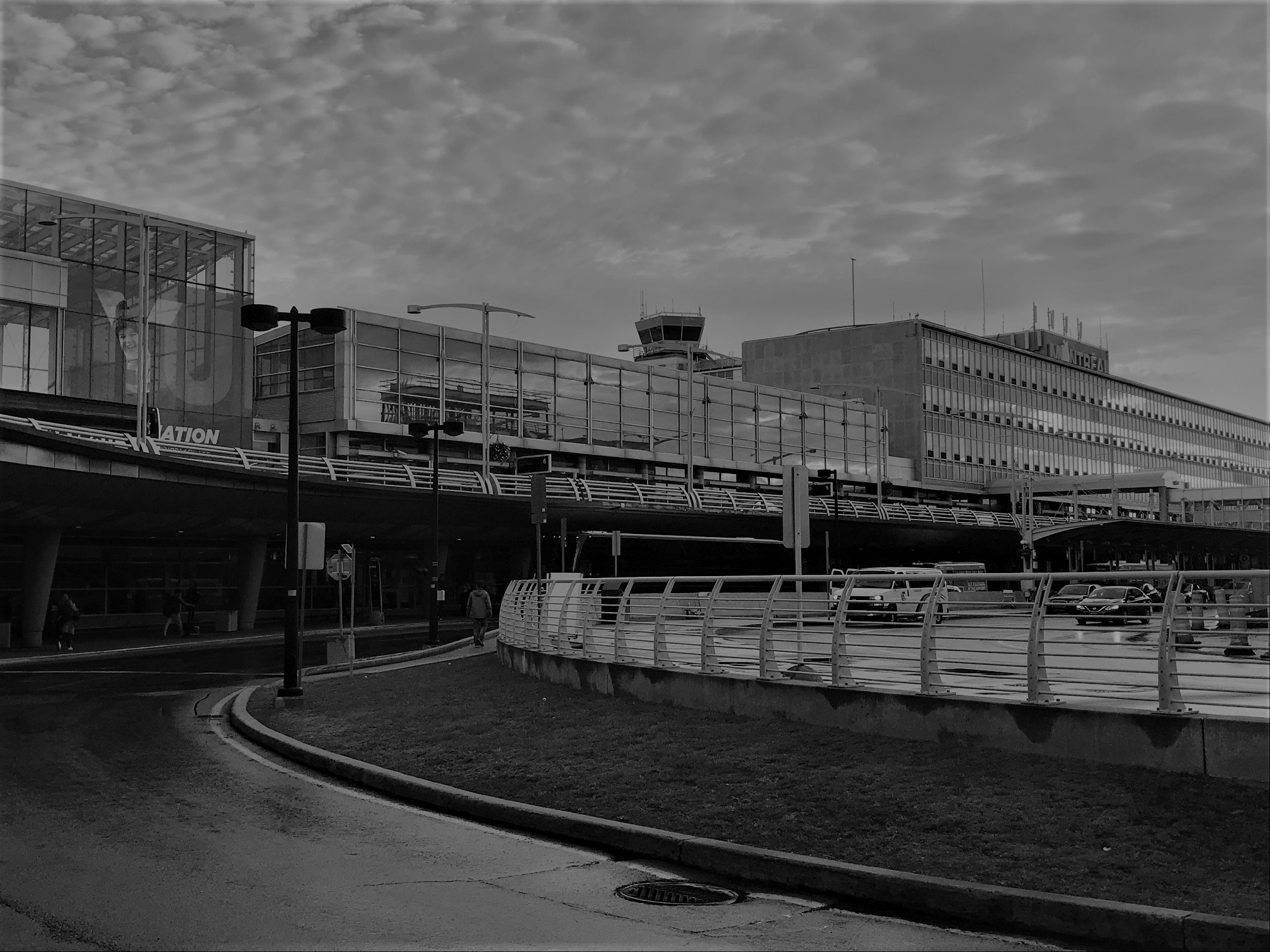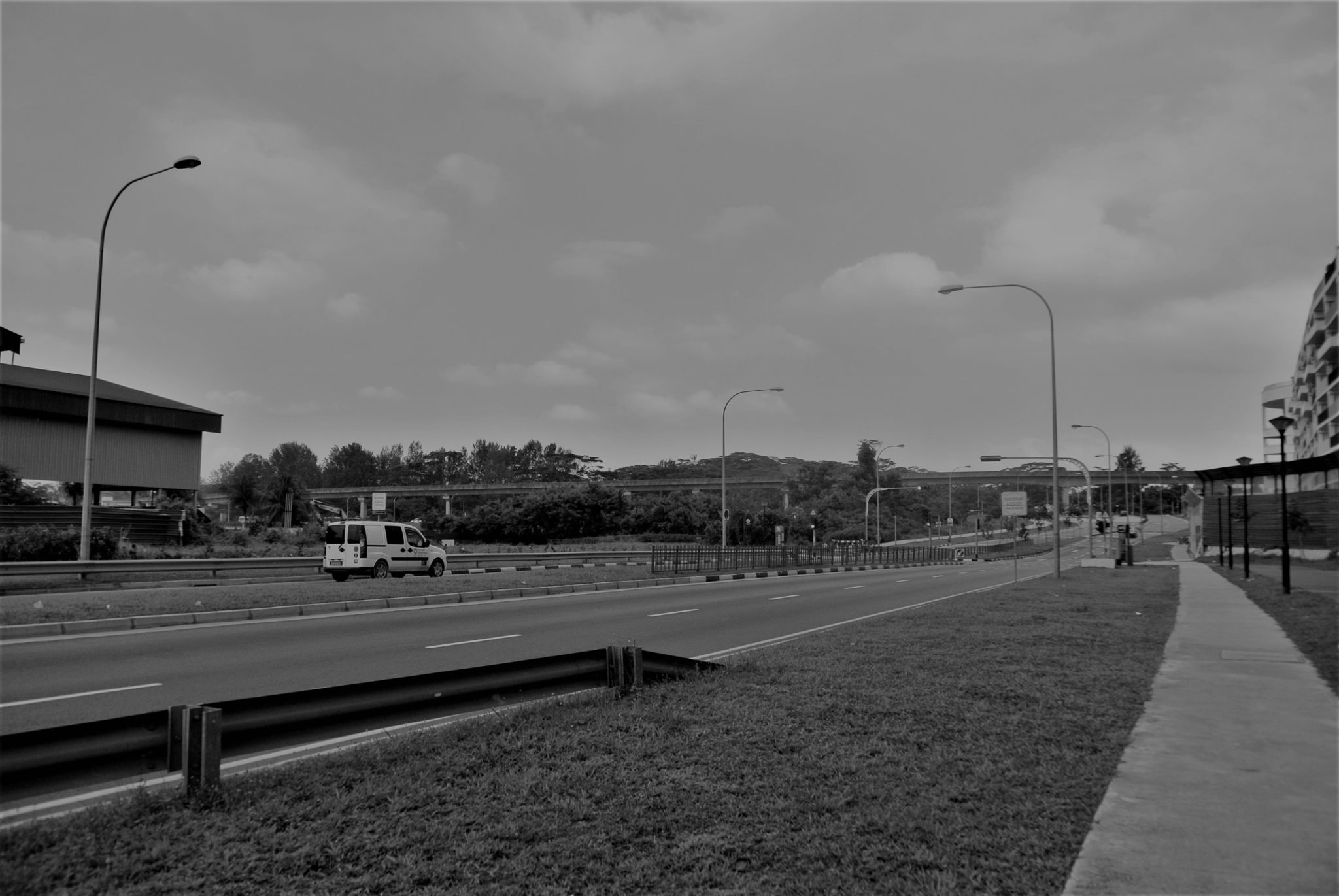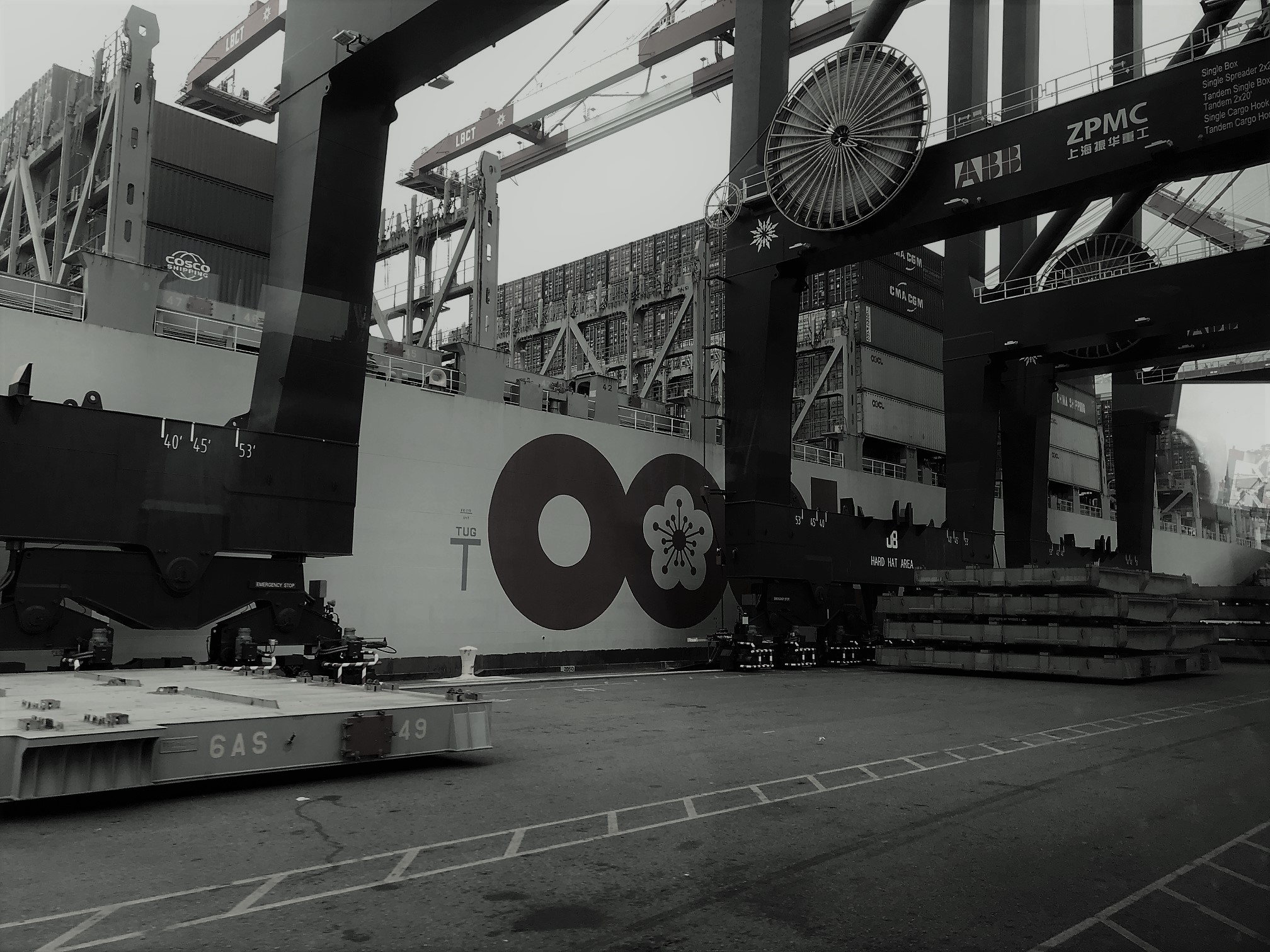Infrastructure Confidential: NOIR Launches in the City of Saints

DOI reference: 10.1080/13673882.2018.00001055
By Jen Nelles, CUNY Institute for Sustainable Cities, Hunter College, City University of New York (USA) and Visiting Researcher, Centre for Regional Economic and Enterprise Development, Sheffield University Management School, Michael Glass, Urban Studies Program, University of Pittsburgh (USA) and Jean-Paul Addie, Urban Studies Institute, Georgia State University (USA)
Introduction
Montréal, the site of the RSA’s 2019 North American conference this September, proved a fitting site for the launch of the RSA Research Network on Infrastructural Regionalism (NOIR). From the window of a plane circling the Island of Montréal on the descent into Montréal–Pierre Elliott Trudeau International Airport, the infrastructural sinews of the metropolitan region are plain to see. Highways and rail lines crisscross Montréal’s extended urban fabric. Bridges crossing the St. Lawrence River tie the city to its suburban hinterlands in Laval, Longueuil, and beyond. Barges on the river itself – alongside the Lachine Canal and the 26km-long Port of Montreal waterfront – disclose the region’s continuing significance as a vital transportation corridor and trans-shipment node for North American and global trade. The airport and the adjacent CN Taschereau freight yard are comparable is scale to the triple-peaked hill that gave Montréal its name illuminating, in material and symbolic terms, the sheer magnitude of the infrastructure systems needed to support the global metropolis.

Figure 1. A gateway to the infrastructure region, Montréal–Pierre Elliott Trudeau International Airport, Montreal (Photo credit: Jean-Paul Addie)
As the city rises up to meet us, our bird’s-eye perspective shifts. Broad patterns of urbanization which read as a palimpsest of planning and governance decisions yield to a messier, partial view from the street that emerges as distinctive forms of urbanism. This is the vantage point where we can capture the lived experience of infrastructural regionalism. Oftentimes, especially in metropolises of the Global North, urban and regional infrastructure systems form a banal background over which our urban lives play out (so long as they continue to function). Yet, as an estimated 500,000 protesters marched past the RSA conference venue on 27 September 2019 as part of the Climate Strike in Canada, another perspective on the fundamental importance of infrastructure was thrown into stark relief. The looming spectre of climate change and progressive movements, such as the Green New Deal, have positioned infrastructure as a critical lever that must be more fully, thoughtfully and critically exploited to affect both spatial and behavioral changes to reach carbon mitigation goals. By displacing cars from Montréal’s streets, if only temporarily, the arteries of urban auto-mobility were recast as a vital terrain over which political protest and democracy are mobilized. The production of regional infrastructure and the ways in which the infrastructural region is lived are seldom black and white…

Figure 2. Climate protesters reclaim Sherbrooke Street, Montreal during the Canada Climate Strike, 27 September 2019 (Photo credit: Jean-Paul Addie)
This is where NOIR comes in. Over the next three years, the Research Network will open spaces for scholars and practitioners to investigate the regional importance of infrastructure (broadly understood) and engage the endemic problems of access, governance, and expertise that the uneven provision of infrastructures within regions can cause. In short, NOIR is concerned with understanding infrastructure’s place in our regional worlds and our capacity to shape regions through its function and symbolism.
A Crucial Juncture
Urban infrastructure is currently enjoying a moment in the spotlight. It is everywhere – literally and figuratively. Over the past two decades an ‘infrastructure turn’ has taken hold across a range of social science disciplines, including urban and regional studies. The Web of Science database for example, shows a forty-fold increase of articles on infrastructure and regions in the past 20 years, and 3.5 times more articles in 2018 than 2009 (2,677 vs 764). At the core of this burgeoning body of scholarship is a shared belief that infrastructure is an essential subject for understanding the social, political, and cultural dimensions of contemporary urbanization.
Analyses of urban infrastructure emanating from social scientific and policy work is creating conceptual and applied research interested in uncovering how networked cities (and cities of networks) worldwide are influenced by the uneven and combined development of infrastructure. For instance, urban regions in the Global North rely on infrastructures that are often taken for granted as assumed public services, even as they are increasingly reliant on private investment for maintenance and operation. City governments are eager to showcase local infrastructure as evidence of how ‘smart’, ‘sustainable’, or ‘successful’ they are. However, infrastructures can fail in unexpected ways that raise questions about urban regions’ dependency on ‘black-boxed’ networks, and the suitability of those competitive city discourses. Meanwhile, new research on, and from, metropolises in the Global South shows how we need to broaden our sense of what infrastructure is, and how it works. In urbanizing areas that may lack the foundations of the ‘modern infrastructural ideal’, people are finding more informal (and potentially more resilient) approaches to meet the needs of rapidly expanding urban populations. The variegated experiences of city-regions throughout the Global South are therefore challenging us to think about urban growth and infrastructure provision in new ways while reaffirming the presumption that infrastructure systems will sustain our collective urban futures as a clear and persistent trope across seemingly distinct and geographically contingent infrastructure conversations.
The current ‘infrastructure turn’ has focused our attention on how diverse infrastructures shape contemporary urban life, space, and place at multiple scales and in parallel locations. From the early-2000s, this body of research has taken significant inspiration from science and technology studies, actor network theory, and critical geography to demonstrate that infrastructure is not just the purview of technocrats and engineers. Steele and Legacy (2017, p. 3) summarize this new focus by arguing infrastructure is “a multidimensional and lived phenomenon… [that] is as much about space, place, ecology and culture, as it is about pipes, scaffolding, wire and concrete”. Taking this assertion seriously means that we can use infrastructure to help understand how urban residents live their lives and how governments are shaping and reshaping regional structures through their deployment. In other words, infrastructure is now seen as essential to making urban futures possible from Jacksonville and Joensuu to Jakarta and Johannesburg.
Throughout the maturation of the ‘infrastructure turn’, it is the urbanity of infrastructure systems and their role in the functioning of cities that has appeared as the primary empirical and theoretical entry point into the conversation. The regional dimension of ostensibly urban infrastructure, in contrast, has tended to remain implicit, black-boxed, or couched within the long tradition of narrow econometric impact studies. NOIR intends to inject a much-needed regional perspective into the current infrastructural moment. But why should we think about infrastructure regionally, rather than locally or generally?

Figure 3. New infrastructural systems combine in Punggol, Singapore (Photo credit: Anna Salvador)
Unpacking the Regional Piece of the Infrastructure Puzzle
Adopting a regional approach is an important task as it offers an alternative perspective and allows us to pose a series of different questions. In itself, this proposition is not novel, but explicitly engaging notions of the region, regionalization, and regionalism has the potential to deepen and extend conversations that, until now, have primarily centered on cities, neighborhoods and localized investigations of infrastructure systems.
Regional studies brings something different to the table. First, cities are not regions. This goes beyond simple questions of scale. Focusing on the regional dimension of infrastructure brings broad urbanization patterns and economic competitiveness issues to the fore, thus highlighting questions of service provision and integration, political collaboration and spatial structure (Sassen, 2001). Not only does infrastructure cross jurisdictional boundaries, even those elements that are completely localized in one area are parts of broader networks (that are more or less connected) and have influence beyond their immediate operational areas. This often means that a regional lens is necessary to really understand observed infrastructural effects and issues.
Second, infrastructure fundamentally facilitates the development of regions. The persistent significance of infrastructure to regional development is evident historically and globally. Urbanized areas have expanded and grown together along the spines of infrastructural networks of various types. For instance, the geographic expansion of Los Angeles could not have occurred without the construction of highway infrastructure. Kuala Lumpur’s transformation into a global city-region was catalyzed by development of a ‘Multimedia Super Corridor’ that connected the new Kuala Lumpur International Airport (KLIA) to the Kuala Lumpur City Center (KLCC) via new investments in transportation and communication infrastructures (Bunnell, 2004). Across such diverse instances, we see that the ways infrastructure is produced, functions, and decomposes are fundamental to the process of regionalization.
Third, infrastructure shapes how we define regions. Regions, as Allen, Massey, and Cochrane (1998, p. 2) famously asserted, “are not ‘out there’ waiting to be discovered; they are our (and others’) constructions”. This compels us to ask how infrastructure brings regional structures into being – and who constructs them (following Metzger, 2013). A regional approach therefore adds context to the infrastructure-urbanization nexus, clarifying the physical and conceptual spaces that create implications for the current and prospective growth of city-regions through sprawl, debt, and planning.
Fourth, accentuating the regional highlights the fact that different political constituencies are activated at the regional scale. As in cities, the ability to create and claim regional space is contested, uneven, and unequal. A regional perspective offers an alternative frame to examine the question of agency in spatial and political terms – both at the macro- and micro-scales – and highlights the importance of examining how the visions of different regional stakeholders are enacted or ignored. Regional futures are mediated by varying stakeholder visions and catalyzed by imminent infrastructural opportunities.
Tracing Infrastructure through Regional Studies
We can think about the emergent interfaces of infrastructural and regional research by assessing how infrastructure has been treated as an object of analysis in the pages of Regional Studies. One of NOIR’s initial projects has involved reviewing key points of engagement with infrastructural questions across 50-plus years of the field’s flagship journal. The resulting virtual special issue (now available online here) compiles 14 important articles published from 1967 to 2019 that reveal major conceptual and policy interventions and areas of opportunity for future research (Glass, Addie, and Nelles, 2019). We approached the task of representing infrastructural debates throughout the journal’s history by selecting papers that best conveyed a sense of the key topical, geographic, and methodological approaches over time. This let us create a broad timeline that captured distinct periods that reflected changing academic interests and social moments. What emerged was a pattern of long-standing interests in quantitative case studies and economic impact analyses along with more recent research exploring political contests over infrastructure and, most recently, the adoption of a truly global set of research perspectives.
Beyond serving as a simple retrospective, the virtual special issue provides an important commentary on our current infrastructure moment. From large capital-intensive projects (new rail lines, tunnels, and dams) that hold the public imagination to the banal day-to-day operation and maintenance of essential infrastructure systems, we found that investment and disinvestment in infrastructure reveals important ways to learn how regions worldwide come into being and are then changed over time – from the construction of the Kainji Dam in Nigeria in the 1970s, through the planning of the Channel Tunnel in the 1980s, to the emergent pathways and regional development currently being spurred by China’s Belt and Road Initiative. In this context, the potential for regional perspectives to contribute to the ‘infrastructure turn’ is compelling, as is the capacity for infrastructure to give a new perspective for future research in regional studies and allied disciplines.

Figure 4. Global logistics embedded in the Los Angeles region at the Port of Long Beach (Photo credit: Jean-Paul Addie)
Foregrounding Infrastructure – NOIR’s Research Agenda
Thinking about infrastructure regionally means considering what the presence or absence of infrastructural networks does to the way regions are constructed, how people live in them, and how they are reconstructed. For example, the service networks and geographic demands of water, energy, communications, and transportation systems mean urban infrastructures involve significant policy debates and practices that amount to regionalism in practice: this regionalism can change over time, occurs regardless of whether the region in question is politically fragmented, or is riven with different partnerships and competing interests. Based on this dynamic landscape, NOIR seeks to stimulate regional studies and regional scholars to think about the relations between infrastructure and the region. This involves looking at how regionally-embedded infrastructures are produced, governed, maintained, and thought about by regional leaders and regional citizens. We want to understand how these relations between infrastructures and regions can create new ideas about what the region is, and for whom it is created. NOIR’s concrete research agenda is grounded in four interconnected themes:
- Interdisciplinary regional dialogues: Infrastructure has multiple dimensions, and so interdisciplinary conversations are essential when thinking about this issue. Beyond falling victim to a singular perspective on the issue, we want NOIR to build on the Regional Studies Association’s established strength at contributing broad, policy-relevant scholarship that will benefit city-regions regardless of their location.
- Explorations of collaborative and competitive governance: Even when dealing with a single infrastructural network, there are multiple stakeholders at play. Multiple agencies can cover different territories and constituencies; different regulatory frameworks interact with infrastructural systems; different priorities create pressure on the users and managers of infrastructure. Work on infrastructural regionalism needs to think about how these dynamics occur, creating a way to understand how infrastructure is actually governed in different regions.
- Unpacking the multiple vantage points opened by diverse regionalisms: How can the multiple perspectives of a region’s inhabitants be understood, with infrastructure as the lens? “Seeing” like a region through infrastructure means thinking about how different constituencies perceive the demands for infrastructure, and how these needs are met. It means thinking about the new regional spaces that broad-scale infrastructures enable and thinking about the way that particular perspectives are favored over others.
- The regional lives of infrastructure. Regions look and function differently relative to where they are viewed from: center or periphery, city or suburb, points of connectivity or spaces of marginalization. We draw inspiration from the work on urban aspirations in Southeast Asia by Tim Bunnell and his collaborators, thinking about how the everyday experiences of infrastructure shapes everyday life and create regional identities, and how the infrastructural visions of privileged stakeholders are perceived by citizens in the city-regions that will be influenced by those plans.
Getting Involved
NOIR launched at the 2019 RSA North America Conference with a session defining the conceptual themes that will drive the next three years’ research and events. Moving forward, the Research Network has been designed to function as an open network that allows researchers and practitioners interested in infrastructure and regions to collaborate and convene. While NOIR is focused on the four thematic areas described above, there are many more complementary lines of enquiry that will emerge over the duration of the network’s activities as we look to push the boundaries of regional infrastructure research.
There are several opportunities to become involved. First, follow us on Twitter @NOIR_RSA to stay posted on network events and research. You can also contact us directly at infrastructural.regionalism@gmail.com to find out more information or to request network membership. Second, look for calls for upcoming workshops and conferences. In 2020 there will be a workshop on water and energy governance (hosted in Pittsburgh, Pennsylvania), and a workshop on the temporal dimensions of regional infrastructure (hosted in Atlanta, Georgia). Sessions on infrastructure regionalisms will be sponsored at forthcoming Regional Studies Association and American Association of Geographers events, and a website is under development to host content generated by the network – including blog posts, workshop summaries, networking opportunities, researcher bios, and perspectives for practitioners and policy-makers. Plans are in place for these events to lead to a range of collaborative academic publications and novel forms of engagement with a range of stakeholder communities. Finally, we welcome other researchers and collectives to develop their own affiliated events and projects that tap into the confluence of infrastructure and regionalism.
As the ‘infrastructure turn’ moves into a new phase that deals with the relational implications of investment and disinvestment in regions worldwide, the prospects for a dynamic period of interdisciplinary regional research with benefits for practitioners and scholars beckons. We look forward to you joining NOIR on this journey.
References
Allen, J., Massey, D., and Cochrane, A. (1998). Rethinking the region. London: Routledge.
Bunnell, T. (2004) Malaysia, modernity, and the multimedia super corridor. London: Routledge
Glass, M.R., Addie, J.-P.D., and Nelles, J. (2019) Regional infrastructure, infrastructural regionalisms. Regional Studies
Metzger, J. (2013). Raising the regional leviathan: A relational-materialist conception of regions-in-becoming as publics-in-stablization. International Journal of Urban and Regional Research, 374(4), 1368-1395.
Sassen, S. (2001). Global cities and global city-regions: A comparison. In A. J. Scott (Ed.), Global city-regions: Trends, theory, policy (pp. 78-95). Oxford: Oxford University Press.
Steele, W., and Legacy, C. (2017). Critical urban infrastructure. Urban Policy and Research, 35(1), 1-6.